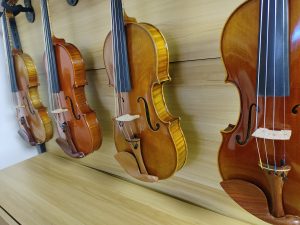What is the difference and connection between purely handmade violins and mechanical craftsmanship?
The violin is an ancient, delicate stringed instrument considered one of the most expressive instruments in music. Making violins is a unique craft that requires great skill and craftsmanship. When it comes to making violins, there are two different methods: hand-made and mass-produced in factories. This article will delve into the differences, pros and cons of these two production methods.
Machine manufacturing or mass production: such as Taixing-basedviolin factory.
Purely handmade violin: It is completed by one person from start to finish, or 2-3 people, one of whom is responsible for the painting or tuning part.
Welcome to buy a stringed instrument from Artisan Violins, you canClick on this linkConnect with us!
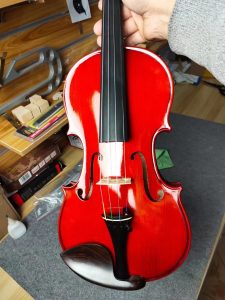
The production process of a pure handmade violin:
A. Material selection and processing: Choosing materials is the first step in making a violin. Generally speaking, domesticviolin woodMaple and spruce are often used because these woods have desirable sound properties and stability. The maker will select the best wood based on his or her own experience and judgment, and handle and store it appropriately to ensure its quality.
B. Cutting and engraving: Once the wood is selected, the maker begins cutting and carving. This process requires the use of various hand tools, such as saws, planes, knives, etc. The maker will measure and cut the wood according to the design drawings, and then use planes and knives to carve out various parts of the violin, such as the panel, back, side panels, bass beam, headstock, etc.
C. Splicing and gluing: After the carving is complete, the maker begins splicing and gluing. This process requires the use of fish skin glue or pig skin glue and clamps. The maker will piece the sculpted parts together and use clamps to hold them in place. Then apply glue to make it adhere tightly.
D. Painting and assembly: Finally, the violin needs to be painted and assembled. This process is very critical because it directly affects the sound of the violin. The fabricator will apply a primer and then apply topcoat, varnish, etc. after it dries. Then assemble the various parts of the violin, such as the tuning pin, tailpiece, and bow. The next step is to tune it.
The production process of mechanically crafted violins:
A. Material selection and processing: Similar to hand-made violins, machine-made violins in factories also require the selection of high-quality wood and proper handling and storage.
B. Digital design and cutting: A major difference in mechanically built violins is the use of digital process flow (CAD) for design and manufacturing. First, the maker creates a 3D model of the violin and uses CAD software to convert it into an executable file. The machine will then cut and engrave according to this file.
C. Mechanized engraving and splicing: The machine equipment uses high-precision tools for cutting and engraving, eliminating errors caused by manual operations. The machine will then also perform splicing and gluing of the violin.
D. Painting and automatic assembly: The process of painting and automatic assembly is also done by machines. The machine automatically applies primer and topcoat, and automatically assembles various parts of the violin, such as tuning pins, tailpieces, bows, etc.
The differences and advantages between purely handmade violins and machine-made violins:
A. Quality and timbre: Handmade violinVery high quality violins can be produced because the maker can use his or her own experience and judgment to select the best wood and carefully adjust each accessory to ensure the quality of the violin. In addition, using pure handwork can also allow the maker to have a deeper understanding of the structure and characteristics of the violin, which also enables it to achieve the best sound effect.
Mechanically manufactured violins can ensure product quality through digital design and high-precision machine cutting, engraving and splicing, resulting in a very consistent sound. While machine equipment cannot adjust to wood properties and details in the same way a human builder can, these violins also generally have very good tone and relatively consistent quality.
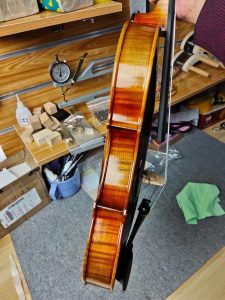
B. Process complexity and time cost: Purely handmade violins require superb skills and long-term practical experience, so the production process is complicated and takes a long time. This also means that production costs are relatively high.
On the contrary, the process of mechanically making violins is very efficient, greatly reducing production costs and time. Machinery and equipment are faster and more accurate than manual labor, allowing a large number of violins to be manufactured in a short period of time. In terms of quantity, machine manufacturing is superior to manual manufacturing.
C. Artistic value and degree of personalization: Purely handmade violins are unique due to the different skills and experience of each person. This gives them a higher artistic value and a higher degree of personalization. These violins are perfect for collectors who value one-of-a-kind items.
Although mechanically made violins can be digitally designed to ensure product quality and consistency, they often lack the natural beauty and humanistic features that come with handcrafting. Mechanically made violins may be more "shape" and relatively lack artistic value and personalization. However, mechanically made violins can usually be produced in larger quantities to meet market demand.
Welcome to buy a stringed instrument from Artisan Violins, you canClick on this linkConnect with us!
To sum up, handmade violins and machine-made violins each have their own advantages and disadvantages. Violins handmade by luthiers have unique characteristics and sound effects, but are more expensive and limited in quantity. Mechanically made violins are more efficient and economical, with better consistency and quality assurance. When choosing a violin, your decision should be based on your personal needs and budget.


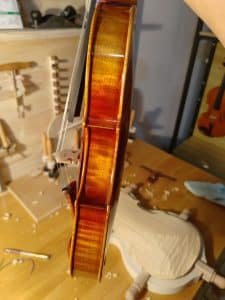
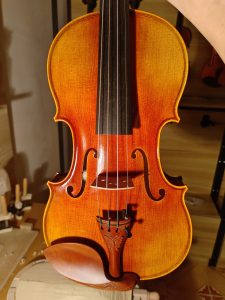
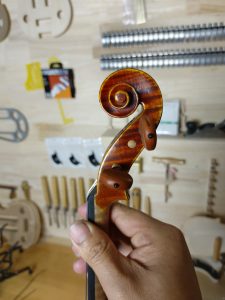
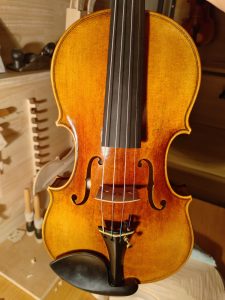
![Purchasing Guide for Purely Handmade Violins [Latest in 2023]](https://www.xytiqin.com/wp-content/uploads/2023/04/2023041723375624-225x300.jpg)
